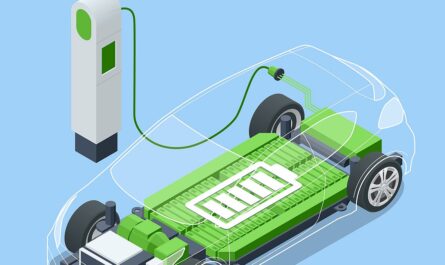What is it?
Vehicles commonly referred to as hybrids incorporate some form of electric propulsion and an internal combustion engine that drives a generator to charge the battery and offer motive power.
Types of HV
There are three main types of HV:
Mild Hybrids: They have small electric motors that are able to recuperate energy lost during braking to charge the battery. They provide power boost and starters. But don’t have electric-only mode for long distance driving.
Full Hybrids: They have larger battery packs that can power the vehicle in electric-only mode for a few miles allowing fully electric driving at low speeds. The internal combustion engine charges the battery as required. Examples include Toyota Prius, Ford Fusion Hybrid.
Plug-in Hybrid Electric Vehicles (PHEVs): Plug-in hybrids have even larger battery packs that can be charged by plugging the vehicle into an electric wall outlet. They allow for longer all-electric range, typically over 10 miles before the gas engine needs to assist. Examples are Chevy Volt, Ford C-Max Energi.
Benefits of Hybrid Vehicles
HV provide better fuel economy compared to conventional vehicles with internal combustion engines only. Some key benefits are:
– Increased Fuel Efficiency: HV are designed to maximize the efficiency of both the electric motor and gas engine to achieve better miles per gallon than gasoline-only Hybrid Vehicles. On average, hybrids get 40-60% better fuel economy than regular cars.
– Lower Emissions: By incorporating electric propulsion, hybrids produce fewer greenhouse gas emissions. Emissions are further reduced for plug-in hybrids which can drive solely on electric power. This leads to lesser impact on environment.
– Quieter Ride: Most hybrids run their electric motors at low speeds for smooth and silent driving. The internal combustion engine only kicks in when more power is needed providing a quieter ride, especially within city limits.
– Regenerative Braking: The electric motor acts as a generator during braking to recapture the kinetic energy lost in braking, which recharges the battery. This innovative system improves the vehicle’s efficiency.
– No Range Anxiety: Unlike all-electric vehicles, hybrids don’t need regular charging as they have backup gas engines. So range is not a limitation even on long drives once the battery is depleted.
Drawbacks of Hybrid Vehicles
While hybrids provide environmental and financial benefits, they also have some disadvantages:
– Higher Initial Cost: Hybrid components like large batteries and two power sources onboard make hybrids more expensive than regular cars. Costs are further elevated for plug-in hybrids. However, fuel savings over time offset the higher sticker price.
– Complex Technology: Hybrid powertrains involve complex integration of an electric motor, gasoline engine, transmission, battery and associated electronics. This increased complexity results in higher production costs.
– Weight Disadvantage: Hybrid Vehicles are heavier than gas-only cars since they carry around batteries and two power sources. The extra weight slightly diminishes the performance and lowers the fuel efficiency.
– Battery Life & Replacement Cost: Over time, the charge-holding capacity of batteries may diminish, reducing the electric range. Battery replacements, if needed, could cost thousands of dollars putting owners at risk.
Rising Demand and Future Potential
With rising fuel prices, stringent emission standards and growing environmental consciousness, HV sales have been steadily increasing in key automotive markets across the world. Some projections are:
– The US hybrid market grew by 38% in 2021. Hybrid cars now hold a 5% share of the total US auto market. Toyota Prius remains bestselling hybrid model.
– China has emerged as the largest hybrid market, surpassing the US. Hybrid and electric vehicle sales in China more than doubled to over 1 million units in 2021.
– Europe saw hybrid sales rise 62% last year driven by nations like Germany, France and UK supporting green transport. Hybrids hold a 10-12% share of new vehicle registrations in major European countries.
– Automakers are rapidly expanding their hybrid lineups with over 70 hybrid nameplates available currently. All major brands will have at least 10 hybrid nameplates by 2025 matching electrification targets.
– Technology advancements are making hybrids more powerful and efficient. Next-gen hybrids could achieve over 100 MPG equivalent fuel economy with refinements in e-motors and batteries.
– Analysts forecast hybrid sales to cross annual 10 million units globally by 2030 as the interim step before mass adoption of all-electric vehicles. Hybrids offer a viable, more accessible green mobility solution.
So in summary, as fuel prices rise worldwide and emission regulations get stringent, hybrid vehicles are emerging as a practical transition technology helping to reduce oil dependency. With continuous technology improvements and expanded model options, hybrid sales will likely continue their stellar growth trajectory in the years to come.
*Note:
1.Source: Coherent Market Insights, Public sources, Desk research
2.We have leveraged AI tools to mine information and compile it




